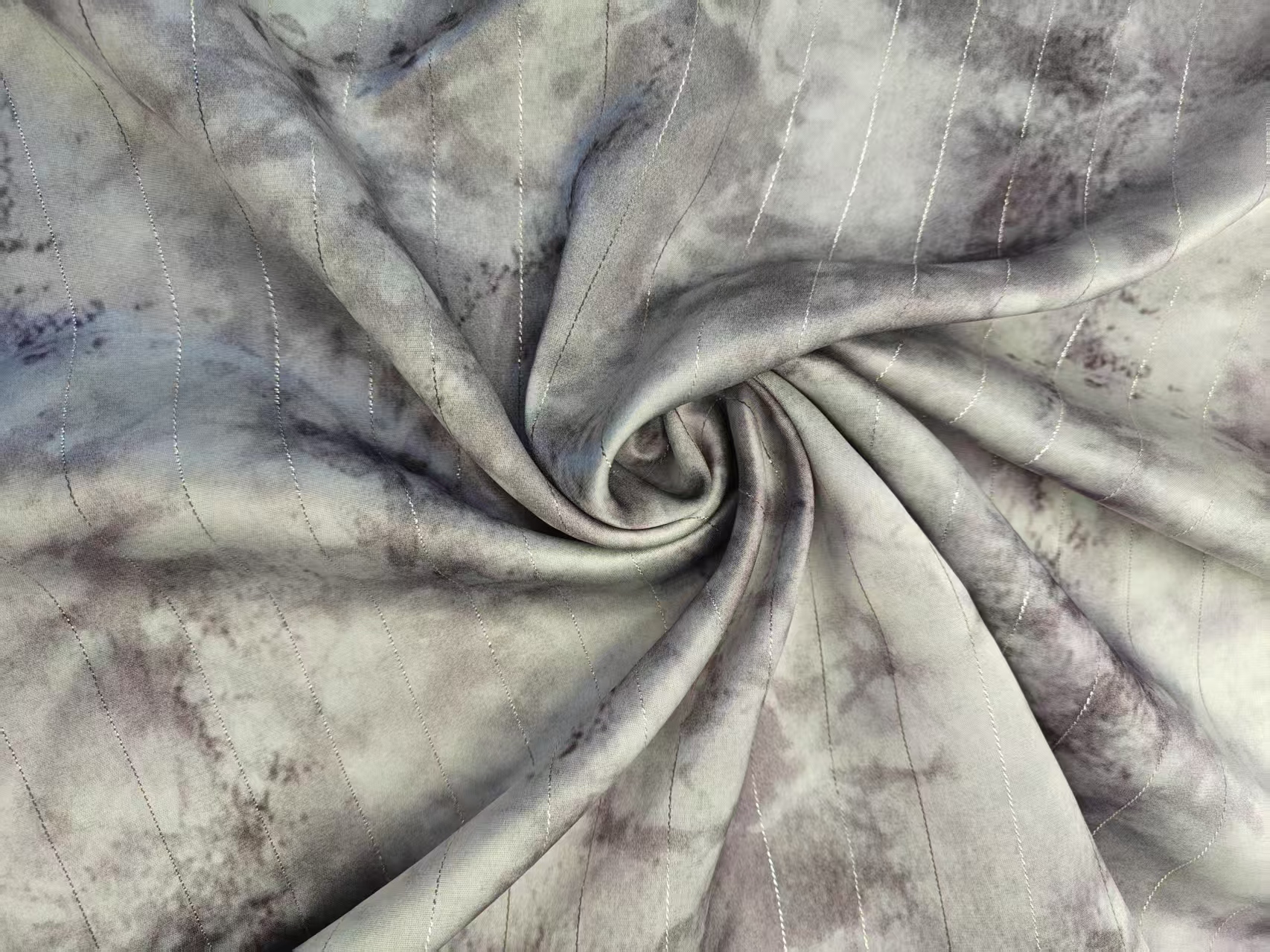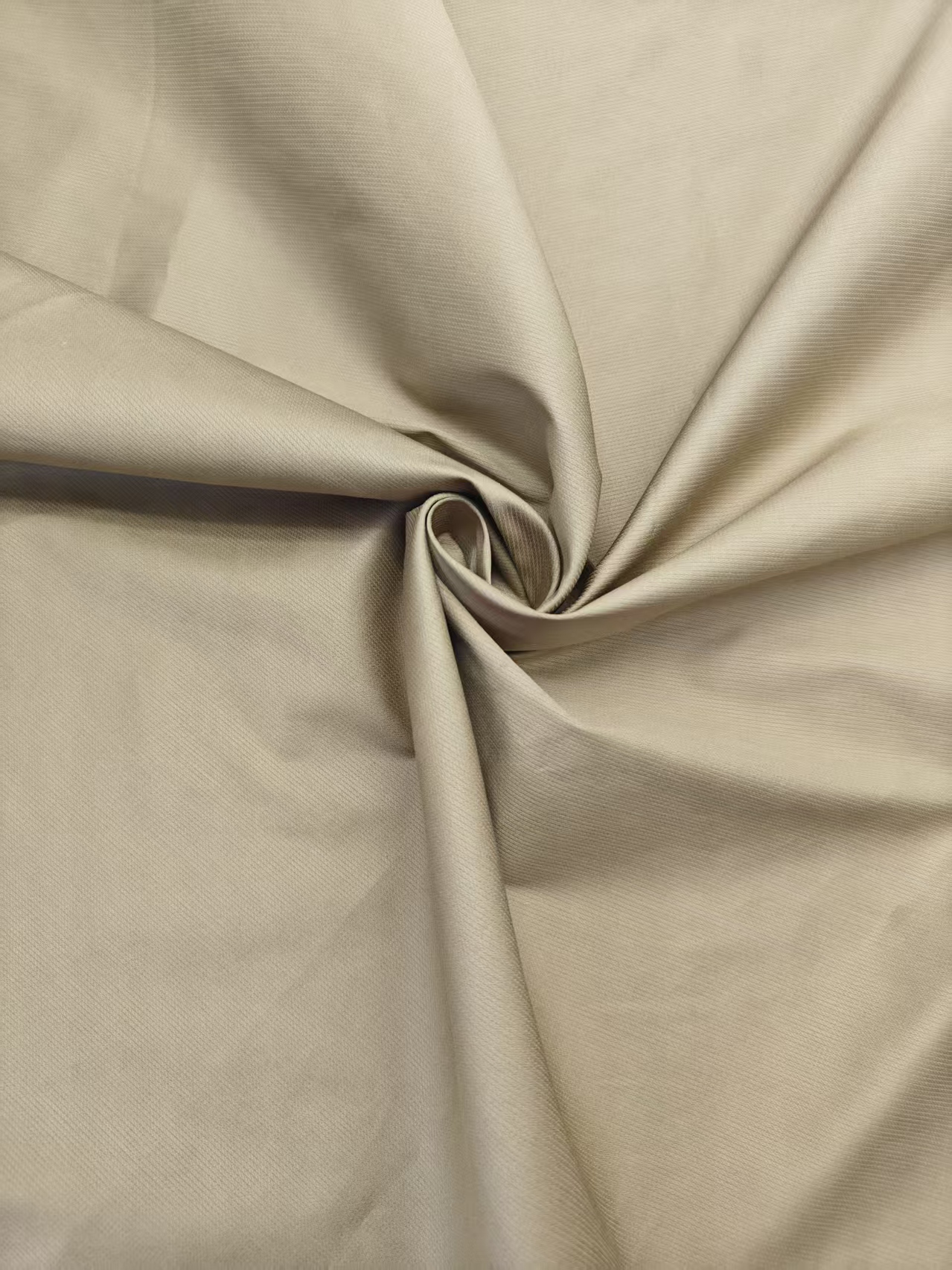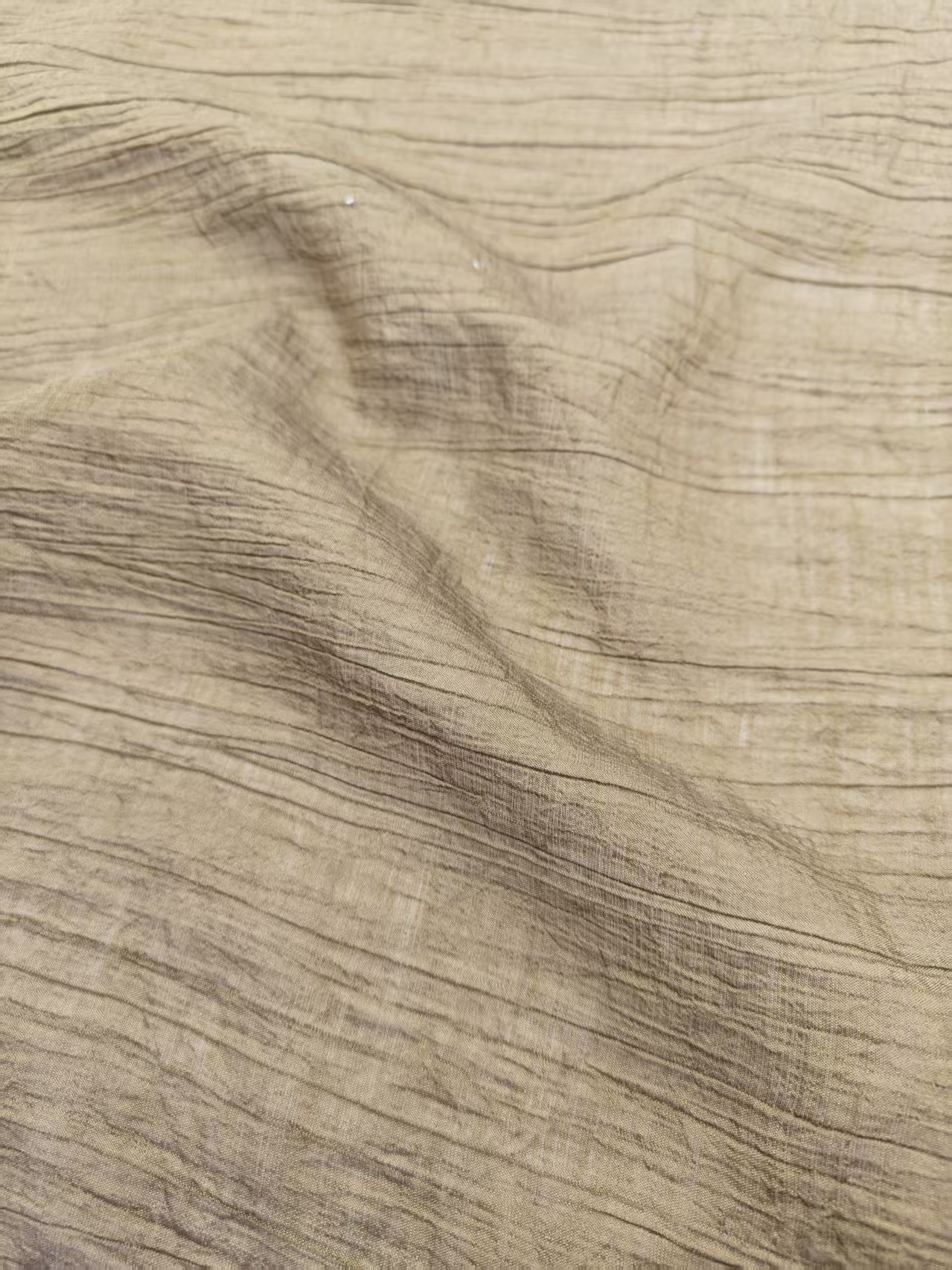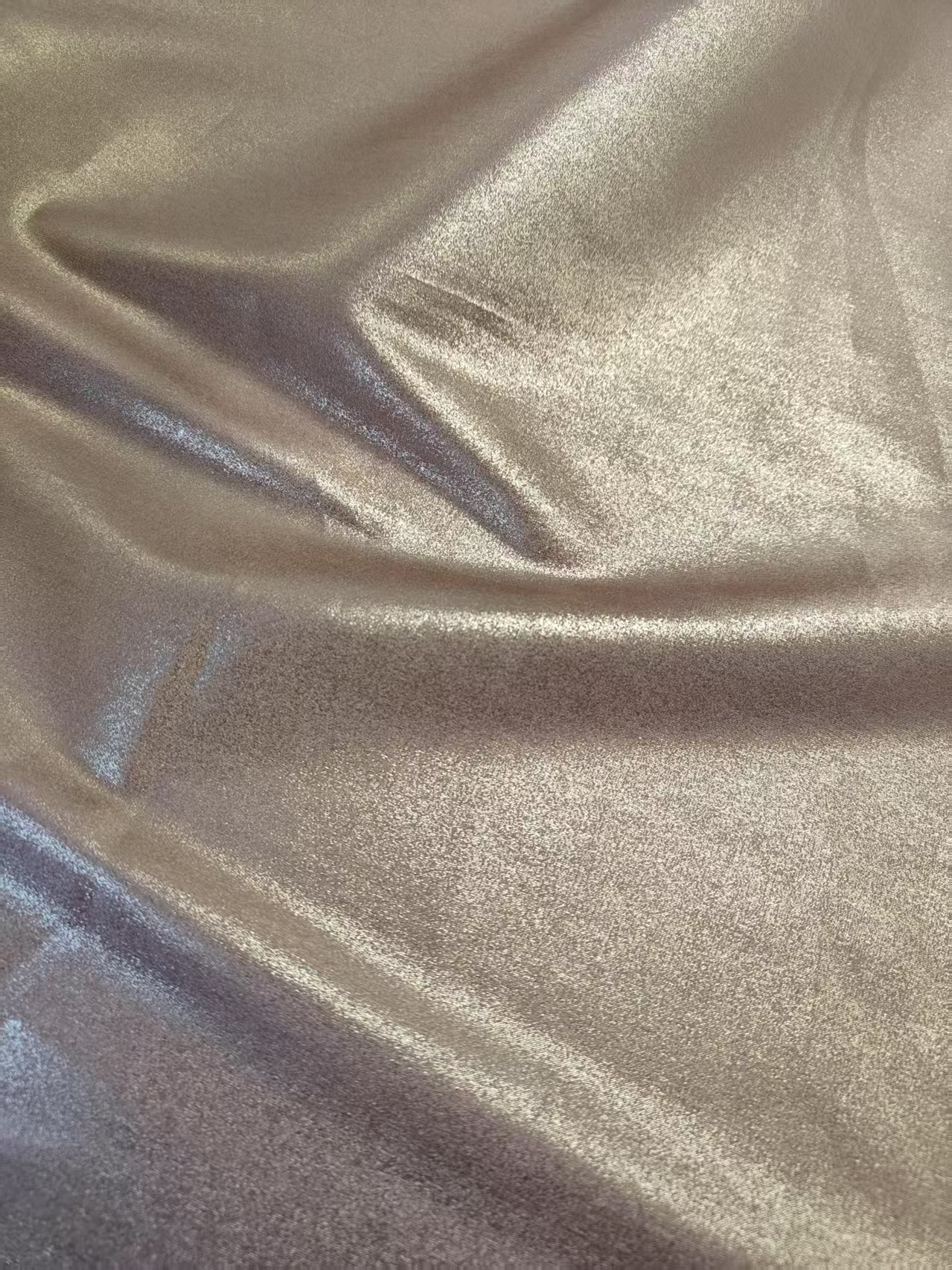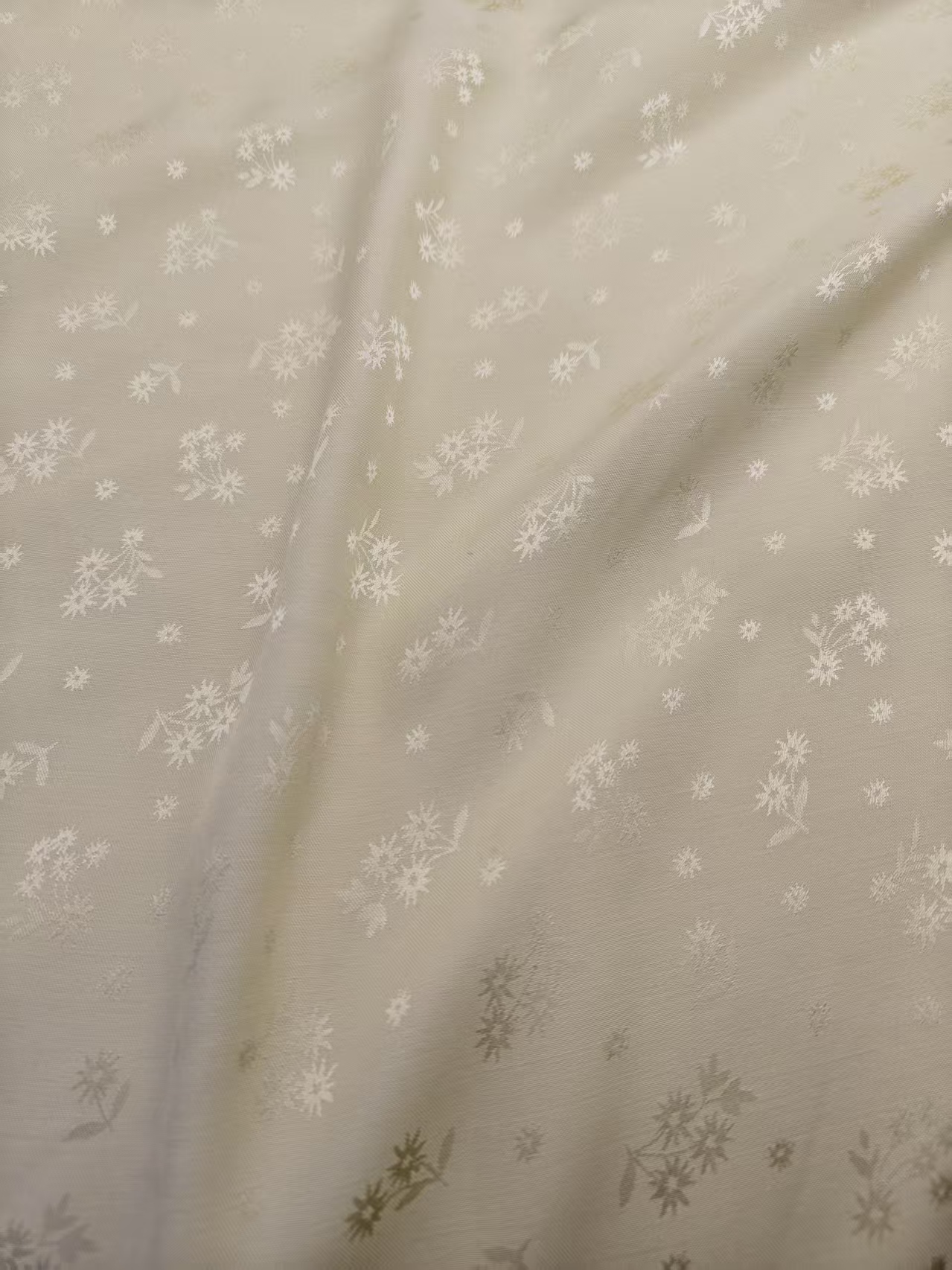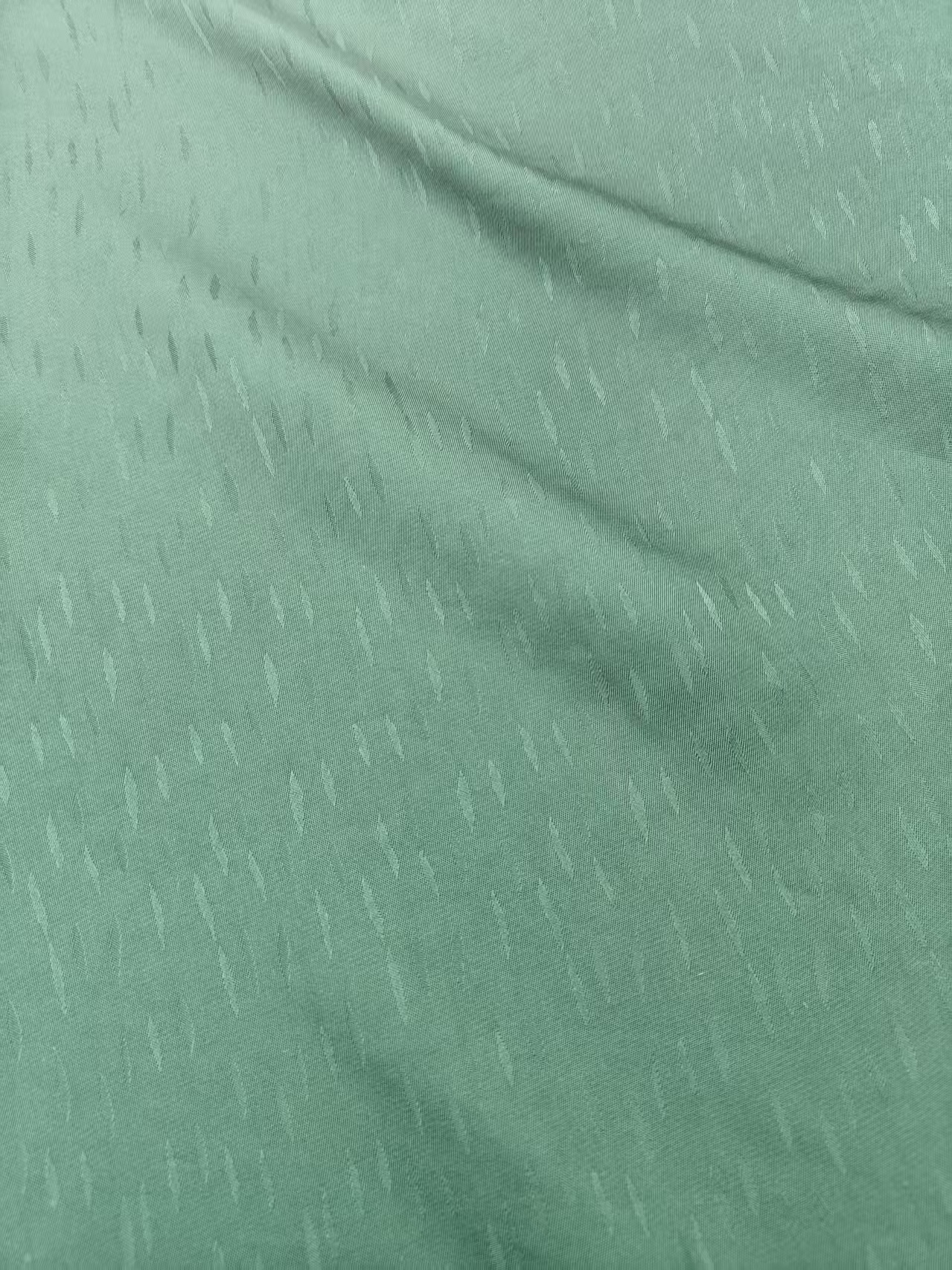Acetate Fabric: Exploring the Elegance of Synthetic Fibers
Acetate fabric, as a synthetic fiber material, occupies an important position in the modern textile industry with its unique luster and soft feel. This fabric is not only widely used in making fashionable clothing and household items, but also ideal for spring and summer due to its drape and breathability.
The main component of acetate fabric is cellulose acetate, which is produced by chemical reaction of cellulose and acetic acid. Its manufacturing process can be carried out by dry spinning or wet spinning, but dry spinning is widely used because of its high fiber quality and easier solvent recovery. According to the content of acetate in the fiber, acetate fabric can be divided into diacetate fiber and triacetate fiber. Diacetate fiber is not easily affected by water, not easy to stain, has low moisture regain, good warmth retention, high elasticity, and is not easy to wrinkle. It is suitable for women's clothing materials, lining materials and underwear. Triacetate fiber has better wear resistance and is suitable for weaving thick and thin fabrics. It can even be interwoven with other fibers to produce finished silk with multi-color effects.
Acetate fabrics are similar to mulberry silk in appearance and feel. Its luster is soft and not dazzling, it feels soft and smooth, and it has good drape performance, making the wearer not only comfortable but also elegant. Acetate fabrics also have good moisture absorption and breathability, and they will not feel stuffy when worn in summer. They are very suitable for making underwear, bathrobes, children's clothing and women's clothing.
The dyeing performance of acetate fabrics is also very outstanding. It can easily accept dyeing and create colorful color effects to meet the needs of different consumers for fashion and personalization. This fabric also has certain mildew and moth-proof properties, making clothes more durable and reducing the trouble of daily care.
Acetate fabrics have been widely used in the fashion industry and home furnishing due to their unique properties. In terms of clothing, acetate fabrics are not only suitable for making daily wear clothes, but also very suitable for making high-end textiles such as evening dresses and scarves. Its soft and delicate feel and silk-like texture allow the wearer to easily control various occasions and show elegant temperament and taste.
In the home furnishing field, acetate fabrics also perform well. It is often used to make household items such as curtains, sofa covers, and bedding. It not only improves the comfort and beauty of the home environment, but also has certain antibacterial and anti-mite properties, ensuring the health of family members.
Acetate fabrics also have some maintenance matters that need attention. Due to its relatively low strength, it is necessary to avoid pulling or rubbing with force. At the same time, acetate fabrics are prone to hydrolysis at high temperatures, resulting in a gradual decrease in fiber strength. Therefore, special care should be taken when ironing to avoid direct contact with the fabric at high temperatures.
With the improvement of environmental awareness, the sustainable development of acetate fabrics has also become a topic of concern. As a synthetic fiber, acetate fabrics may cause certain environmental pollution during their production process. By improving production processes and recycling and reuse technologies, its impact on the environment can be effectively reduced.

 English
English previous post
previous post



